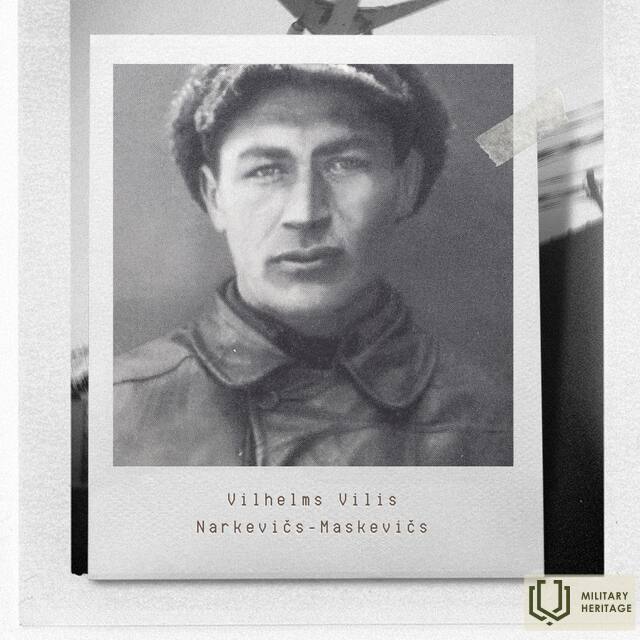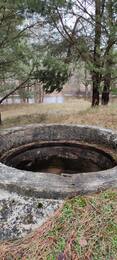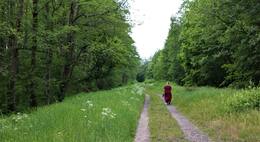Vilio Narkevičiaus kovinės veiklos 1919 m. lapkričio 6 d. aprašymas
Būrio vado, leitenanto Juliaus Rosenthalio Vilio Narkevičiaus, kovinės veiklos aprašymas, 1921 m. lapkričio 3 d.
Būrio vado, leitenanto Juliaus Rosenthalio Vilio Narkevičiaus, kovinės veiklos aprašymas, 1921 m. lapkričio 3 d.
„1919 m. lapkričio 5–6 d. naktį mano vadovaujamas vadas užėmė pozicijas Škedės rajone palei fortų liniją nuo jūros iki pylimo aukščio maždaug ½ varsto, turėdamas užduotį bet kokia kaina išlaikyti minėtą liniją ir žvalgyti priešą palei pakrantę.“
Būrį sudarė 23 kareiviai, kiekvienas turėjo po 50 šovinių, raketinį pistoletą su 4 šoviniais ir anglišką šautuvą su pakankamu šovinių skaičiumi, kuriam vadovavo kapralas, vėliau eilinis Narkevičius, kaip senas šaulys, patyręs kalėdinių ir sausio mėnesio mūšių nuotykių. Išskyrus vadovaujantį seržantą, kuris žuvo, ir kapralą Narkevičius, nė vienas kareivis anksčiau nebuvo dalyvavęs mūšiuose.
Išvarius kelias žvalgų grupes nuo mūsų ugnies, 1919 m. lapkričio 6 d., apie 2 val., priešas pradėjo didžiulę ataką. Mano būrio zonoje buvo galima stebėti 9 kulkosvaidžių ir patrankų veiksmus. Aplinkui tvyranti tamsa neleido priešui pasirinkti teisingos krypties, todėl dauguma užpuolikų, traukdamiesi į jūrą, susitelkė prieš mano vilkstinę.
Daviau anglų eskadrai raketomis ženklą apšaudyti aikštę priešais fortus, bet ugnis nebuvo atidengiama, ir priešas turėjo tęsti žygį be artilerijos. Šautuvų šovinių buvo ribotas, jie senka, ir naujų gavau tik pasibaigus mūšiui. Priešas pralaužė frontą tarp mano ir mano kaimynų už pakylos esančios vielos ir, prisidengęs kita kanalo puse, maždaug 100 jardų atstumu puolė mane, iš kur atidengė parengiamąją ugnį smūgiui. Nebuvo įmanoma tinkamai atsakyti, nes šovinių likdavo tik po vieną dėtuvę vienam vyrui.
Kitus surinkau pylimo tranšėjos gale, kad galėčiau pasitikti priešą durtuvais, ir įsakiau kapralui Narkewitzui bei jo būriui slinkti jūros kopomis link Schiedės ir atidengti ugnį iš patrankų į priešo sparną ir užnugarį. Tai buvo vienintelė priemonė bent jau neleisti priešui per kelias minutes užimti forto pylimo, nes durtuvais buvo galima kirsti tik nedidelę fronto linijos dalį.
Dėl savo vikrumo ir tamsos kapralas Narkewitzas pasiekė sėkmės. Kiti kareiviai nešiojo šautuvų šovinius ir saugojo šautuvą. Narkevičius užmontavo patranką ant pajūrio kopos ir apšaudė priešą. Tuo metu, remiantis vėlesne informacija, gauta iš plaktuko Ebelio, kuris turėjo būti nuteistas mirties bausme pagal Karo teismo nuosprendį už išdavystę, dvi Rusijos kavalerijos kuopos atvyko kolona be arklių ir priartėjo prie šautuvo, kuris buvo netvarkingai paleistas atgal. Galvodami apeiti mus iš flango ir būti atstumti iš užnugario, tie, kurie buvo priešais mus, metėsi į Skede kelio pajūrio pusę, palikdami 2 sunkiuosius ir 4 lengvuosius kulkosvaidžius, daug rankinių granatų, kuriomis buvo ginkluota visa kuopa, šautuvus, šovinius, bombonešių sviedinius, 9 žuvusius ir daugiau sužeistus. Vados rajone paėmėme į nelaisvę 5 vokiečių kareivius ir vieną latvį.
Kapralo Narkevičius už savo gudrumą, vikrumą ir šaltakraujiškumą nusipelno pripažinimo, kad tą pačią naktį fortų linija nebuvo užimta iš priešo. Narkevičius grįžo su nesugadintu vokišku sunkiuoju kulkosvaidžiu ir 7 dėžėmis šovinių.
1921 m. lapkričio 3 d.
3-iosios kuopos vadas
Leitenantas Julius Rosenthal.
Susijusi laiko juosta
Susijusios temos
Susijusios vietos
Kapralo Narkēvičiaus apkasas
Kapralo Narkēvico restauruoti kasinėjimai yra visai šalia Cietokšnio kanalo ir juos galima apžiūrėti tiek atskirai, tiek palei Karostos Laisvės taką.
Apkasų vieta, iš kurios Latvijos armijos kapralas Vilis Narkēvics šautuvu (lengvuoju kulkosvaidžiu) saugojo Škėdės tiltą. Kapralas Narkēvičs buvo ginkluotas iš britų įsigytu 7,69 mm kalibro Lewis automatiniu šautuvu (lengvuoju arba rankiniu kulkosvaidžiu). Dėtuvėje buvo 97 šoviniai, todėl tai buvo sunkus (beveik 12 kg) ginklas, bet efektyvus. Kapralo Vilio Narkēvicso patirtis, įgyta Antrojo pasaulinio karo frontuose, ir taiklus kulkosvaidžio šaudymas lėmė pergalę mūšyje. Jam buvo įteiktas Latvijos ginkluotųjų pajėgų riterių ordino karinis ordinas.
NBS kariai ir kariai kapralo Narkēvico pareigas atkūrė 2017 m. balandžio mėn.
Laisvės takas (Karostos maršrutas)
Gerai prižiūrimas 9 km ilgio pėsčiųjų takas, sukurtas Latvijos vyrų drąsai ir didvyriškumui atminti 1919 m. Latvijos laisvės kovos metu.
Takas prasideda Redanoje ir driekiasi per Karostos miškų teritoriją, pajūriu ir Cietokšnios kanalu, aplankant caro laikų įtvirtinimus ir sovietmečio karinį paveldą. Take yra 5 informaciniai stendai, kuriuose supažindinama su Karostos ir visą miestą juosiančios įtvirtinimų sistemos sukūrimu, 1919 m. Liepojos Laisvės mūšiais, vėlesniais metais pastatytais kariniais statiniais ir gyvenimu Karostoje sovietmečiu.
1918 m. lapkričio 18 d. buvo paskelbta nepriklausoma Latvijos Respublika, tačiau naujai įkurtos Latvijos valstybės teritorijoje vis dar buvo dislokuoti keli užsienio kariai.
1919 m. lapkritį įvykęs Liepojos mūšis suvaidino svarbų vaidmenį atgaunant Latvijos laisvę, kai karių didvyriškumo dėka priešas buvo pralaimėtas beveik 5 kartus. Po lemiamų mūšių Liepojoje Bermontas buvo išvarytas iš Latvijos.
Paminklas kariams, žuvusiems Liepojos išvadavimo kovose, Šiaurinėse kapinėse
Pagrindinė Liepojos Nepriklausomybės kovų atminimo vieta yra Šiaurinėse kapinėse, kur 1924 m. lapkričio 24 d. buvo atidengtas K. Bikšės-Pikšės suprojektuotas paminklas žuvusiems išsivadavimo kovose netoli Liepojos. Paminklas buvo apgadintas Antrojo pasaulinio karo metu, bet buvo atstatytas 1989 m.







